
Revolution in the Making:
Abstract Sculpture by Women, 1947 – 2016
13 March - 4 September 2016
Los Angeles
Beginning 13 March 2016, Hauser Wirth & Schimmel is pleased to present ‘Revolution in the Making: Abstract Sculpture by Women, 1947 – 2016,’ the inaugural exhibition at its new complex in the heart of the downtown Los Angeles Arts District. Through nearly 100 works made by 34 artists over the past seventy years, this ambitious undertaking traces ways in which women have changed the course of art by deftly transforming the language of sculpture since the postwar period. Works on view reveal their makers inventing radically new forms and processes that privilege solo studio practice, tactility, and the idiosyncrasies of the artist’s own hand. ‘Revolution in the Making’ explores multiple strains of artistic approaches, characterized by abstraction and repetition, that reject the precedent of a monolithic masterwork on a pedestal, employing such tactics as stacking, hanging, and intertwining, to create an intimate reciprocity between artist and viewer. The exhibition examines how elements that are central to art today – including engagement with found, experimental, and recycled materials, as well as an embrace of contingency, imperfection, and unstructured play – were propelled by the work of women who, in seeking new means to express their own voices, dramatically expanded the definition of sculpture.
On view through 4 September 2016, ‘Revolution in the Making’ is co-curated by Paul Schimmel, former chief curator of the Museum of Contemporary Art, Los Angeles, and Partner and Vice President at Hauser & Wirth; and Jenni Sorkin, art historian, critic, and Assistant Professor of Contemporary Art History at the University of California, Santa Barbara.
‘Revolution in the Making’ includes many works on loan from nearly 60 major American museums, artists’ estates, and private collections, as well as new sculptures commissioned for the exhibition. The show is accompanied by a fully illustrated catalogue published in collaboration with Skira. This book includes original contributions by Jenni Sorkin, as well as Elizabeth A.T. Smith, Executive Director of the Helen Frankenthaler Foundation, and former Chief Curator at the Museum of Contemporary Art, Chicago; and Anne M. Wagner, art historian, critic, and Class of 1936 Professor emerita, University of California, Berkeley.
Tracing a Revolution
Feminism changed the course of 20th century art by altering the very notion of what art could be. Hewing to more sensuous materials and the intimate processes of the handmade, women sculptors at mid-century began to turn away from the dominant masculinist language of art in order to articulate female sensibility and experience in their work, shifting the dialogue of art and laying the foundations for a revolution. The late 1940s and 1950s saw women asserting their own content into the formal geometries of post-war abstract sculpture. The collision of Post-Minimalism and feminism in the 1960s and 1970s witnessed women making their boldest breakthroughs and pioneering a ‘no going back’ course for subsequent generations of the 1980s, 1990s, and beyond.
To explore the story of these radical shifts and their legacy, ‘Revolution in the Making’ unfolds as a thematic historical survey that is international in scope and fundamentally revisionist, making women artists central to the history of sculpture by tracing the legacy of studio-based organic abstraction. Their collective innovation – their pioneering of new forms, materials, and processes – has been far more influential than has been previously understood or recognized. While the individual contributions of such artists as Louise Bourgeois and Eva Hesse have been widely acknowledged, ‘Revolution in the Making’ offers a narrative that includes many other artists who have contributed to the evolution of abstract sculpture through their working methods and materials. The exhibition moves chronologically, comprising dozens of works by 34 sculptors of different generations and points of origin, evidencing remarkable variety in thought, approach, and purpose. But all of the sculptures included in ‘Revolution in the Making’ – from the overt to the enigmatic, the purely formal to the concertedly psychological, the self-contained to the enveloping – are connected by materiality, expressiveness, and tactility, and through the autonomous labor of the artist in her studio.
‘Revolution in the Making’ begins in the immediate post-war era with the historically important predecessors Ruth Asawa, Lee Bontecou, Louise Bourgeois, Claire Falkenstein and Louise Nevelson. Spanning the late 1940s through the early 1960s, these works examine abstraction based upon oblique evocations of the fragmented body and the influence of the unconscious, with seriality and repetition emerging as essential idioms of a new sculptural language. Among highlights here are an extraordinary grouping of Bourgeois’s ‘Personage’ sculptures made in New York and first seen at the Peridot Gallery in 1949. They are juxtaposed with a dramatic installation of a dozen of the most significant hanging looped wire sculptures made by Ruth Asawa. Also on view are bas-relief works by Lee Bontecou, whose use of the void within welded armature achieves a highly original representation of the body, showcasing an aggressive physicality in a shallow space.
‘Revolution in the Making’ continues with the decades of the 1960s and 1970s, and includes works by Magdalena Abakanowicz, Lynda Benglis, Heidi Bucher, Gego, Françoise Grossen, Eva Hesse, Sheila Hicks, Yayoi Kusama, Mira Schendel, Michelle Stuart, Hannah Wilke, and Jackie Winsor – Post-Minimalist artists who ignited a revolution in their use of process-oriented materials and methods. Instead of vehicles of meaning, these sculptors produced forms that celebrate techniques of making and a one-to-one relationship with materials within the private sphere of the studio. Sculptures in this section of the exhibition evidence a strong sense of materiality through stacking, layering, cutting, draping, rubbing, gouging, and other tactile processes as means of conveying presence and a sense of their makers’ being-in-the-world. These works are characterized by striking – and, ultimately, enduringly influential – formal innovations, including the appropriation of unconventional industrial materials like latex and rope, organic and natural materials like saplings and earth, and ephemeral materials like wax and paper.
Among highlights here are two renowned late monumental works by Eva Hesse: the latex and canvas floor work ‘Augment’ and the four-part wall piece ‘Aught’, both created in 1968. These daring and powerful sculptures question the liminal space between painting and sculpture, with Hesse using the armature of the wall and the floor to layer, wrap, cover, and engage space, chance, indeterminacy, and the potency of matter in flux. The two sculptures were first shown in tandem in the legendary exhibition, ‘9 at Leo Castelli Warehouse’ (1968), curated by artist Robert Morris; the inaugural exhibition at Hauser Wirth & Schimmel reunites them for the first time. Also reunited are Sheila Hicks’ saffron colored linen and wool ‘Banisteriopsis’ (1965 – 1966) and ‘Banisteriopsis II’ (1965 – 1966 / 2010). Hicks, like Hesse, attended Yale and moved from color theory and drawing into three-dimensional work; by the early- and mid-1960s, Hicks was actively exploring strategies of layering, stacking, folding, and weaving.
Magdalena Abakanowicz’s massive 1973 ‘Wheel with Rope’, an aggressive sculpture made of found industrial materials, contrasts with defining 1970s ‘pour pieces’ by Lynda Benglis, who solved the riddle of how to translate gestural abstraction into sculpture by engaging walls and floors in a suggestive violation of spatial conventions. Also here is a large grouping of Hannah Wilke’s ‘blossoms’, which reverberate with nearby works by Mira Schendel and Gego, European émigrés whose delicate sculptures reinvented the notion of drawing as a spatial celebration of the artist’s one-on-one relationship with her materials.
In one of the most dramatic gestures of ‘Revolution in the Making’, Jackie Winsor’s soaring ‘30 to 1 Bound Trees’ stands at the center of Hauser Wirth & Schimmel’s sprawling outdoor courtyard, an architectural hub where key galleries of the complex converge and connect. Winsor’s 20 foot-high mast of white birch saplings and hemp rope, originally created in 1971 at the Nova Scotia College of Art and Design and recreated for the first time in its original form for ‘Revolution in the Making’, anchors a space that is both a physical and psychological orientation point, a destination and an intersection.
The exhibition continues with works by Isa Genzken, Cristina Iglesias, Liz Larner, Anna Maria Maiolino, Marisa Merz, Senga Nengudi, Lygia Pape, and Ursula von Rydingsvard – a Post Modernist generation of increasingly global figures who are far more expansive in their use of space, and whose works signal a foundational shift from discreet sculptural objects toward more installation-based practices. These women have focused upon dimensional forms as alternatives to the criticality of the feminist gaze conveyed in other media. Co-curator Jenni Sorkin has written, ‘Somewhere in the 1990s, the artist in her studio took a permanent backseat to the politics of assertion: the declarations of race, sexuality, and class. ‘Preciousness’ became a term used to denigrate abstraction. And yet the qualities it implied were arguably symptomatic of abstraction: a sensitivity to objects, and the disquieting intensity devoted to the process of making them.’
Artists in this passage of ‘Revolution in the Making’ engage space more aggressively in order to work through questions of structure and materials, drawing performance, social critique, and previously untried mediums into their sculpture. Collapsing the intimate and the monumental, Ursula von Rydingsvard’s carved cedar ‘Untitled (Nine Cones)’ (1976) is an ideal example of these eliding agendas. Other highlights here are an array of Isa Genzken’s miniature concrete building-like works from 1986 – 1990; and exceptional translucent wire and metallic string works by Marisa Merz and Lygia Pape, revealing their makers’ respective quests for transcendence through abstraction. The space in which the viewer exists becomes immersive and inclusive as sculptures move away from being self-contained objects, expanding rather than consolidating.
‘Revolution in the Making’ concludes with a new generation of sculptors, including numerous works commissioned for the exhibition. Phyllida Barlow, Karla Black, Abigail DeVille, Sonia Gome, Rachel Khedoori, Lara Schnitger, Shinique Smith, Jessica Stockholder, and Kaari Upson create immersive, color-drenched environments that embrace domestic materials and craft as an embedded discourse, boldly eliminating material hierarchies. Color is introduced in a way that is riotous and painterly. Eschewing the armatures and supports employed by previous generations, the sculptures here do not make form their subject. And at a time when so much art is mechanically fabricated and editioned, these works defy the perceived limitations of studio-based sculpture and celebrate the enduring power of the handmade.
The most recent works build upon the legacy of previous generations. Here visitors will recognize an amalgam of influences from the women artists who came before: The knotting, weaving, piling, and slumping of earlier eras have expanded into forest-like installations redolent of contemporary urban experience. Recycling has become the craft tactic of the present. Nengudi’s pantyhose have been replaced by Karla Black’s lip liner and pulverized eye shadow; Shinique Smith’s shredded clothing and ribbons kiss a wall that Lynda Benglis would once have violated with a tumbling waterfall of poured and cast aluminum; and Jessica Stockholder’s agglomerations feature un-sturdy metal protrusions that evoke the legs of Genzken’s concrete works of the 1980s.
Perhaps most significant of all, the discreet human body – a central preoccupation of women abstract sculptors in earlier decades – has now disappeared. In its place, the artists in the final section of ‘Revolution in the Making’ offer an empty space for the viewer’s own body. Moving through, under, around, and within these new sculptures, the visitor becomes partner and participant in the continuing quest to articulate the female experience through art.
'Revolution in the Making: Abstract Sculpture by Women' will be on view at Hauser Wirth & Schimmel daily from Wednesday, Friday – Sunday: 11 am – 6 pm and Thursday: 11 am – 8 pm, from 13 March through 4 September, 2016.
Installation views


Related Content
About the Artists
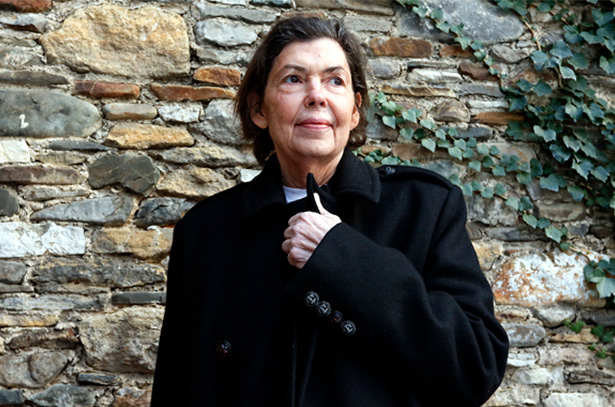
Isa Genzken
Isa Genzken has long been considered one of Germany’s most important and influential contemporary artists. Born in Bad Oldesloe, Germany, Genzken studied at the renowned Kunstakademie Düsseldorf whose faculty at the time included Joseph Beuys, Bernd and Hilla Becher, Benjamin H.D. Buchloh and Gerhard Richter. Since the 1970s, Genzken’s diverse practice has encompassed sculpture, photography, found-object installation, film, drawing and painting. Her work borrows from the aesthetics of Minimalism, punk culture and assemblage art to confront the conditions of human experience in contemporary society and the uneasy social climate of capitalism.Genzken is best known for her sculptures, gaining attention for her minimalist oriented Hyperbolos and Ellipsoids in the late 70s, and architecturally-inflected works such as her recent epoxy resin windows and skyscraper Columns from the 90s. Genzken’s practice is incredibly wide-ranging, but her work remains dedicated to challenging the viewer’s self-awareness by means of physically altering their perceptions, bringing bodies together in spaces and integrating elements of a mixed media into sculpture.
Genzken’s totemic columns, pedestal works and collages combine disparate aspects from her many sources in seemingly nonsensical, yet harmonious sculptural compilations. These sculptures take the form of precariously stacked assemblages of potted plant designer furniture, empty shipping crates and photographs, among other things, arranged with the traditions of modernist sculpture in mind. With this cacophonous array of objects, Genzken undermines the classical notions of sculpture, re-creating the architectural dimensions of her beloved skyscrapers and the riotous colors of the city streets. Devoid of the weightiness and overpowering scale seen in the sculptures of her Minimalist predecessors, her work abandons notions of order and power, allowing the viewer to relate to the works’ inherently human qualities of fragility and vulnerability.
Inspired by the stark severity of modernist architecture and the chaotic energy of the city, Genzken’s work is continuously looking around itself, translating into three-dimensional form the way that art, architecture, design and media affects the experience of urban life, and the divides between public and private. There is an intuitive and consistent manner to Genzken’s work, not only in dramatising aspects of space and scale for the audience, but in creating new dialogues and contact with surfaces of material. The socio-political content is evident and central to her oeuvre.
In 2017, Genzken was awarded the prestigious Goslarer Kaiserring (or Emperor’s Ring) by the city of Goslar, Germany.
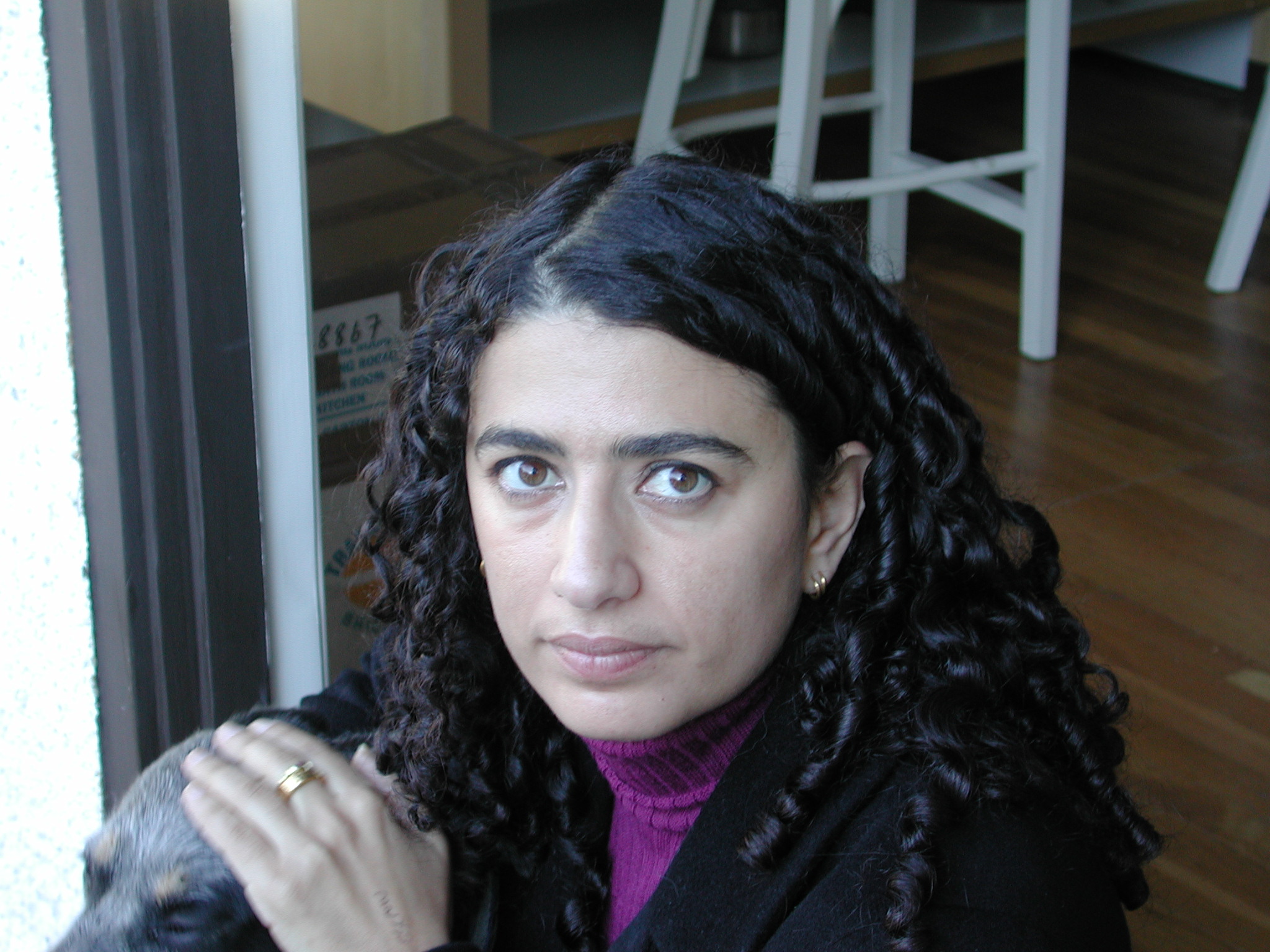
Rachel Khedoori
Australia-born, Zurich-based artist Rachel Khedoori poses provocative phenomenological questions in her work that merges installation, sculpture, film and photography. Khedoori gained international recognition with her first comprehensive solo exhibition at Kunsthalle Basel and Kunstverein Braunschweig in 2001.
Khedoori is known for work that reinterprets the architecture of domestic spaces. She often reconstructs rooms that challenge viewers’ perceptual experience by interweaving mirrors, films and scale models into the installation. While the work is noticeably void of any representations of the figure, the viewer’s physical presence assumes the role of subject. Khedoori’s small-scale sculptures are often models, which serve as representations of imagined or hidden spaces. Khedoori’s use of the cinematic apparatus as a sculptural form, for example the 35mm film projector, emphasizes tensions at play within her practice. The work conflates or flattens the space between the physical, built environment and the illusory realm of film, suggesting that the distinction between reality and representation have become obscured. Khedoori also utilizes books, film, and photography to symbolize the act of documentation, encouraging viewers to reconsider the conditions of reportage and representation. Her work serves as a metaphor for the instability of memory and challenges viewers to reconsider the boundary between reality and imagination.
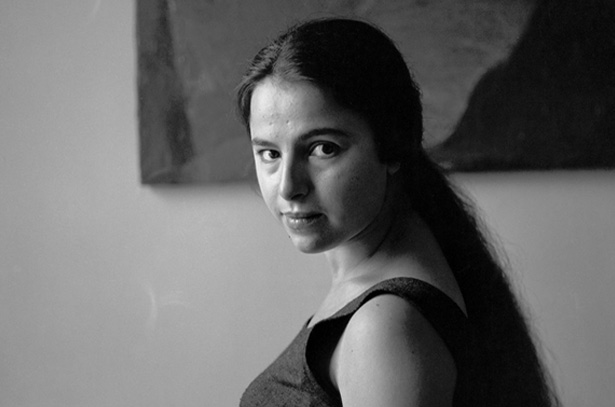
Eva Hesse
Born in Hamburg Germany in 1936, Eva Hesse is one of the icons of American art of the 1960s, her work being a major influence on subsequent generations of artists. Comprehensive solo exhibitions in the past 50 years, as well as a retrospective that toured from the San Francisco Museum of Modern Art to the Museum Wiesbaden in Germany and finally to the Tate Modern in London, have highlighted the lasting interest that her oeuvre has generated. Hesse cultivated mistakes and surprises, precariousness and enigma, to make works that could transcend literal associations. The objects she produced, at times barely present yet powerfully charismatic, came to play a central role in the transformation of contemporary art practice.
In New York in the 1960s, Hesse was one of a group of artists, including Robert Morris, Bruce Nauman, Richard Serra and Robert Smithson, who engaged with materials that were flexible, viscous or soft: latex rubber, plastic, lead, polythene, copper, felt, chicken-wire, dirt, sawdust, paper pulp and glue. Often unstable and subject to alteration, these elements yielded works that were vital in their relativity and mutability. Hesse was aware she produced objects that were ephemeral, but this problem was of less concern to her than the desire to exploit materials with a temporal dimension. Much of the life-affirming power of Hesse’s art derives from this confident embrace of moment. As she stated in an interview with Cindy Nemser for Artforum in 1970, 'Life doesn’t last; art doesn’t last.'
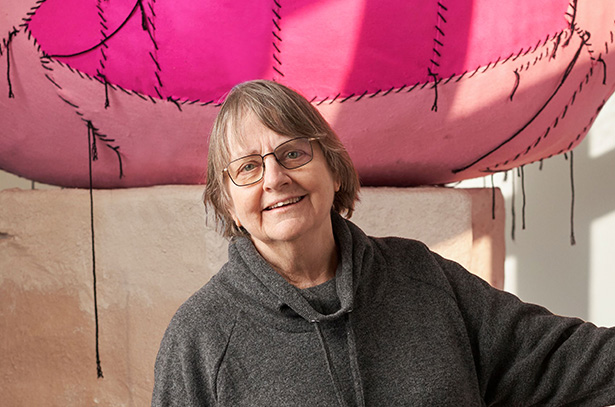
Phyllida Barlow
For almost 60 years, British artist Phyllida Barlow took inspiration from her surroundings to create imposing installations that can be at once menacing and playful. She created large-scale yet anti-monumental sculptures from inexpensive, low-grade materials such as cardboard, fabric, plywood, polystyrene, scrim, plaster and cement. These constructions were often painted in industrial or vibrant colors, the seams of their construction left at times visible, revealing the means of their making.
Barlow’s restless invented forms stretch the limits of mass, volume and height as they block, straddle and balance precariously. The audience is challenged into a new relationship with the sculptural object, the gallery environment and the world beyond.
‘There’s something about walking around sculpture that has the possibility of being reflective, like walking through a landscape,’ Barlow has said. ‘The largeness of sculpture has that infinite possibility to make one engage beyond just the object itself and into other realms of experience.’
Barlow exhibited extensively across institutions internationally and in 2017 represented Britain at the Venice Biennale.

Anna Maria Maiolino
Anna Maria Maiolino is one of the most significant artists working in Brazil today. Born 1942 in Italy, Maiolino’s practice expresses a concern with creative and destructive processes. Working across a wide range of disciplines and mediums—spanning drawing, printmaking, poetry, film, performance, installation and sculpture—Maiolino relentlessly explores notions of subjectivity and self.
Through fragmentation and abstraction, Maiolino’s surfaces are rich with metaphor, alluding to and questioning language, sexuality, desire and the unconscious. The artist’s deeply formative migration from post-war Southern Italy to a politically unstable South America, and her linguistic passage from Italian to Portuguese, engendered an enduring fascination with identity. Maiolino has perfected a dialogue between opposite yet complementary categories in a practice that dissolves dichotomies of inner and outer, self and other. Hers is an art in search of a new language for the liminal realm of daily human existence.
Shadowed by the turmoil and governance of military repression, Maiolino’s early experiments in the 1960s connected her to important movements in Brazilian art history such as New Figuration and New Objectivity. Maiolino took part in the radical reconfiguring of the art object—and thus the art institution and the artist—during this period. Along with Lygia Pape, Lygia Clark, and Hélio Oiticica, Maiolino participated in the 1967 exhibition, ‘New Brazilian Objectivity,’ which symbolized a cultural shift in previous constructivist traditions and established a new vision for the production of art in Brazil.
Since the early 1980s Maiolino has worked with malleable materials that, through her handling, come to bear the imprint of unconscious gestures, daily rituals and sensory expressions of being. Her mark-making is based on the repetition of basic actions that are recorded in the material; her forms the result of this laborious processing of raw material, like the basic bodily functions of eating and defecating. Hers is a work of liberation: abstraction is freed from the more repressed and puritanical precepts of Minimalism and brought back into the service of the active, desiring body.
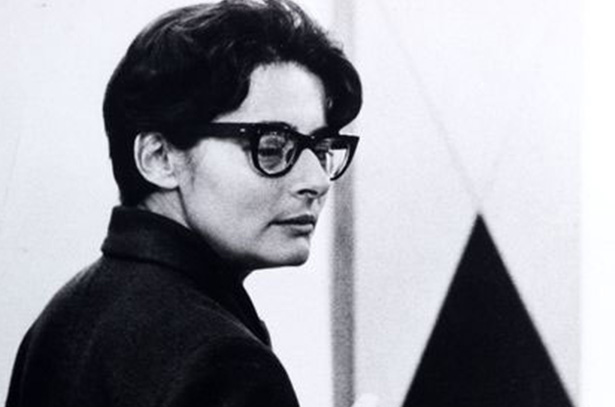
Mira Schendel
Mira Schendel is one of the most significant artists to emerge from Latin America during the twentieth century. Born in Switzerland in 1919, Schendel emigrated to Brazil from Europe in 1949, ultimately settling in São Paulo in 1953, where she swiftly occupied a leading place in the country's vibrant post-war artistic scene.
Traversing the realms of painting, drawing and sculpture, while deriving inspiration from a constellation of sources—as varied as Concrete Poetry, semiotics, phenomenology, the epic tradition, Zen Buddhism, and aspects of Eastern and Western philosophy—Schendel's prolific body of works provoked a radically new lexicon of avant-gardist practice in Brazil.
The late Brazilian poet, Haroldo de Campos, has described the spirit of her work as ‘an art of voids’, wherein, ‘the utmost redundance begins to produce original information; an art of words and quasi-words where the graphic form veils and unveils, seals and unseals… a semiotic art of icons, indexes, symbols which print on the blank of the page their luminous foam.’
Born in Zurich to a family of Jewish origin, Schendel was baptized and raised as a Catholic in Italy. In 1938, while studying philosophy at the Catholic University in Milan, Schendel was persecuted for her family's Jewish heritage. Forced to relinquish her studies and citizenship, Schendel sought asylum in Yugoslavia before passing through Switzerland and Austria (with the initial intent of establishing herself in Sophia, Bulgaria), and ultimately settling in Brazil.
This history is vital to the spiritual sensibility underlying the poetics of Schendel's work, as well as to her particular investigations of language and its material embodiments.
Although Schendel received considerable recognition during her lifetime, since her death in 1988, her work has continued to achieve national and international visibility: cementing her status as one of the most important artistic voices of her time.
Current Exhibitions
1 / 12




































